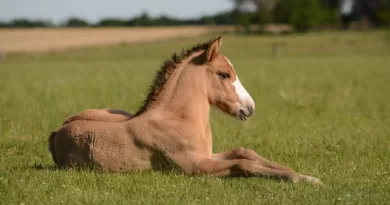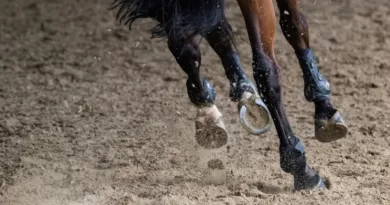Why Do You Mount a Horse From the Left Side
Historical Origins of Left-Side Mounting
Historical evidence suggests that the practice of mounting a horse from the left side has its roots in ancient times. While the exact origins remain somewhat unclear, there are several theories that shed light on this equestrian tradition. One theory points to the militaristic tactics of ancient armies, where mounting from the left side allowed soldiers to keep their right hand, often the dominant hand, free for combat. This strategic advantage ensured that they could swiftly draw their weapons or engage in battle if necessary.
Another theory revolves around the practicalities of horse handling. In many cultures, horses were traditionally led by a handler on the left side, holding the reins in their right hand. By mounting from the left, riders could easily transition from holding the reins to positioning themselves in the saddle. This aspect of horse handling likely played a crucial role in the development of the left-side mounting tradition, as riders found it more efficient and effective to mount from the same side where they were already positioned.
The historical origins of left-side mounting may vary across cultures and time periods, but the underlying principles of combat readiness and efficient horse handling seem to have transcended boundaries. Understanding the historical context of this tradition provides valuable insights into the equestrian practices we observe today. By exploring its origins, we can gain a deeper appreciation for the cultural and practical factors that have shaped this long-standing tradition in the world of horsemanship.
Cultural Influence on Mounting from the Left Side
Mounting a horse from the left side has deep cultural roots that extend back centuries. In many cultures, the left side of the horse has been considered the “correct” side for mounting. This cultural preference is often traced back to historical military traditions. In the past, most soldiers carried their swords on their left side, making it more convenient to mount from the right. However, mounting from the left side became a deliberate choice to ensure that the sword could be easily drawn with the dominant right hand while the left foot was in the stirrup. This practice gradually translated into civilian equestrian activities and has remained prevalent ever since.
The cultural influence of mounting from the left side is also evident in various equestrian disciplines and events. Traditional ceremonies, such as parades, shows, and competitions, typically uphold the practice of mounting from the left side. This adherence to tradition fosters a sense of continuity and respect for the historical origins of equestrian sports. Furthermore, it serves as a unifying factor that connects riders from different backgrounds and disciplines, emphasizing the mutual respect and understanding within the equestrian community. While some riders may choose to mount from the right side for personal reasons or due to specific training techniques, the cultural influence on mounting from the left side remains strong and deeply ingrained in equestrian customs.
Practical Reasons for Mounting from the Left Side
One practical reason for mounting from the left side of a horse is the historical tradition that has been passed down through generations. For centuries, equestrians have consistently mounted from the left side as a customary practice. This consistency has allowed for easier handling and training of horses, as they become accustomed to the approach and the mounting process from this side. Additionally, mounting from the left side helps maintain certain traditions and etiquettes within equestrian culture, adding to the overall experience and enjoyment of horse riding. This historical significance provides a practical reason for continuing the tradition of left-side mounting.
Another practical reason for mounting from the left side is the alignment it offers between the rider’s body and the horse’s natural anatomy. Mounting from the left side allows the rider to approach the horse’s back in a more direct and accessible manner, promoting balance and stability during the mounting process. The left-side mounting position also facilitates easy access to the stirrup, enabling the rider to easily swing their leg over the horse’s back and settle into the saddle comfortably. For riders with limited mobility or physical challenges, mounting from the left side can provide greater convenience and ease, ensuring a safer and more enjoyable ride for both horse and rider.
Understanding Horse Anatomy and Physiology
Horses are magnificent creatures with unique anatomy and physiology that allows them to perform remarkable feats. Understanding their physicality is essential for anyone working with horses, especially when it comes to mounting from the left side. From a physiological standpoint, horses are built in such a way that mounting from the left side is the preferred and safer option.
Firstly, the horse’s heart is located on the left side of their body, slightly tilted towards the left. Mounting from the left side allows the rider to distribute their weight more evenly and reduce the pressure put on the horse’s heart. Additionally, the horse’s left eye has better peripheral vision compared to the right eye. By mounting from the left, the rider positions themselves in the horse’s field of vision, helping to establish trust and communicate more effectively. Understanding these anatomical and physiological aspects is crucial for a harmonious relationship between horse and rider.
Left-Side Mounting and Horse’s Natural Instincts
The natural instincts of horses play a significant role in the preference for left-side mounting. Horses have a highly developed flight response, where they instinctively react to potential threats by fleeing in order to protect themselves. This response is rooted in their evolution as prey animals.
When approaching a horse from its left side, the handler or rider is positioning themselves in a way that is less likely to trigger the horse’s flight response. This is because, in their natural herding instincts, horses tend to gather with others in a clockwise direction. By mounting from the left, riders are aligning themselves with the horse’s natural instinctive behavior, creating a sense of safety and stability for both the horse and the rider.
The Evolution of Left-Side Mounting in Equestrian Sports
Mounting a horse from the left side has a long and rich history in equestrian sports. It is believed to have originated from the ancient military practices of knights and soldiers. In medieval times, a mounted warrior wore his sword on the left side of his body, making it easier to draw it with his right hand. So, mounting from the left side allowed the rider to swing his right leg over the horse’s back without hindrance, ensuring a swift and efficient transition from being on foot to being mounted on horseback.
Over time, this left-side mounting tradition became embedded in various equestrian disciplines and has continued to be passed down through generations. Today, it is a widely accepted practice in equestrian sports, such as dressage, show jumping, and eventing. By consistently adhering to the tradition of left-side mounting, riders ensure uniformity and avoid confusion in competitions. Furthermore, this practice has become deeply ingrained in the training and riding techniques employed by riders, contributing to the overall harmony and effective communication between horse and rider.
Benefits of Consistent Left-Side Mounting for Horse and Rider
Consistent left-side mounting offers numerous benefits for both the horse and the rider. Firstly, mounting from the left side allows for a more consistent and standardized approach in equestrian activities. By consistently mounting from the left side, riders can establish a routine that helps them maintain balance and stability during the mounting process. This helps in preventing accidents or mishaps that may occur if the horse and rider are not in sync while mounting.
Furthermore, mounting from the left side is beneficial for the horse’s physical well-being. Horses are asymmetrical creatures, with more bulk on their left side due to the positioning of their organs. By consistently mounting from the left side, the weight distribution on the horse’s back is more balanced, reducing the risk of discomfort or injury. Additionally, regularly mounting from the left side helps in keeping the horse accustomed to human interaction, making it easier for riders to establish a bond and build trust with their equine partners. This can lead to enhanced communication and a more harmonious riding experience overall.
Left-Side Mounting and Horse Training Techniques
Different horse trainers have developed various techniques for training horses, and one common aspect that many of them focus on is left-side mounting. Left-side mounting is believed to have several benefits when it comes to horse training. By consistently mounting from the left side, trainers can establish a routine and reinforce the horse’s understanding of commands and expectations. This repetition helps the horse become more comfortable with the mounting process and can lead to a smoother overall training experience.
Additionally, left-side mounting allows trainers to position themselves in a strategic position. When mounting from the left side, the trainer is often able to maintain better control of the horse’s movements and reactions. They can use their body language and positioning to influence the horse’s behavior and guide them during the training session. This positioning also allows trainers to easily reach the horse’s head, allowing for quicker and more effective communication through the use of reins and other signals. Overall, left-side mounting is seen as a practical technique that enhances horse training by establishing routines and facilitating clear communication between horse and trainer.
Left-Side Mounting Etiquette and Tradition
Traditions and etiquette play a significant role in the equestrian world, and left-side mounting is no exception. For centuries, mounting a horse from the left side has been considered the proper and polite way to do so. This tradition is believed to have its roots in early military practices when soldiers would mount their horses from the left side to facilitate the drawing of their swords with their right hand. Over time, this custom has become ingrained in equestrian culture, and it is often seen as a sign of respect and proper horsemanship.
Moreover, left-side mounting is not only a matter of tradition but also serves practical purposes. By consistently mounting from the left side, riders help establish a sense of routine and familiarity for their horses. Horses are creatures of habit, and they find comfort in predictable patterns. When a horse is accustomed to being mounted from the same side each time, it reduces the likelihood of them becoming anxious or unsettled. This predictability can also contribute to a smoother and more harmonious riding experience, allowing both horse and rider to focus on their respective tasks without distractions.
Exploring Alternative Mounting Methods and their Implications
Exploring alternative mounting methods in equestrian sports is an intriguing area of study. While the traditional practice of mounting from the left side has been the norm for centuries, there has been some curiosity surrounding the potential benefits and implications of deviating from this convention. One alternative method that has gained attention is mounting from the right side. Proponents of this approach argue that it can provide a better balance for both horse and rider, as it allows the horse to use its stronger hind leg to push off when the rider is mounting. However, critics express concerns about potential confusion for the horse, as years of conditioning may make left-side mounting more natural for them. Additionally, there are also safety considerations to take into account, as riders and handlers may be less accustomed to working from the right side.
Another alternative mounting method that has been explored is the use of mounting blocks or ramps. These aids provide a higher platform for the rider to mount from, alleviating some of the strain on the horse’s back and reducing the need for the rider to swing their leg over. This method may be particularly useful for individuals with limited mobility or for horses with back issues. However, some experts caution that relying too heavily on mounting aids could hinder the development of the rider’s balance and coordination, as well as diminish the rider’s ability to mount in a variety of situations where such aids may not be readily available.
As equestrian sports continue to evolve and new perspectives emerge, the exploration of alternative mounting methods offers an intriguing avenue for further study. Understanding the potential benefits and implications of these methods can aid in promoting the welfare and performance of both horse and rider. However, further research and practical application are necessary to fully assess the effectiveness and suitability of these alternatives in various equestrian disciplines.
Why is left-side mounting more common than right-side mounting in equestrian sports?
Left-side mounting is more common due to historical origins, cultural influence, practical reasons, and the understanding of horse anatomy and physiology.
What are the historical origins of left-side mounting?
Left-side mounting dates back to ancient times when knights carried their swords on their left side, making it more convenient to mount from the left.
How does cultural influence affect mounting from the left side?
Cultural traditions and practices have influenced equestrian sports, with many cultures favoring left-side mounting as a sign of respect and tradition.
What are some practical reasons for mounting from the left side?
Mounting from the left side allows riders to lead the horse with their right hand, leaving their dominant hand free for other tasks. It also aligns with the standard training methods used in horsemanship.
How does left-side mounting align with horse anatomy and physiology?
Mounting from the left side takes into account the horse’s natural instincts and biomechanics, as it is believed to be less stressful and more comfortable for the horse.
How has left-side mounting evolved in equestrian sports?
Left-side mounting has evolved over time from a practical and cultural tradition to a standard practice in most equestrian disciplines, ensuring consistency and safety for horse and rider.
What are the benefits of consistent left-side mounting for both horse and rider?
Consistent left-side mounting allows for clear communication, establishes a routine, and promotes balance and symmetry in the horse’s training and development. It also reduces the risk of injury for both horse and rider.
How does left-side mounting influence horse training techniques?
Left-side mounting is often incorporated into various training techniques and exercises, helping to establish trust, respect, and consistency between horse and rider.
Is there any etiquette or tradition associated with left-side mounting?
Yes, left-side mounting is considered a traditional and respectful practice in equestrian sports, and it is expected of riders to mount from the left side unless there are specific circumstances or reasons to do otherwise.
Are there alternative mounting methods? What are their implications?
Yes, there are alternative mounting methods such as right-side mounting or mounting from a mounting block. These alternative methods may have their own implications and considerations, including rider preference, specific horse requirements, and cultural variations.




